#Philippi Kavala
Explore tagged Tumblr posts
Text

The Marble Head of Apollo Unearthed in Greece
The excavation, carried out by a group of students of the Aristotle University of Thessaloniki in the archaeological site of Philippi Kavala, brought to light important findings. Among other things, they discovered a rare head of Apollo dating back to the 2nd or early 3rd century AD.
The statue dates back to the 2nd or early 3rd century AD and it probably adorned an ancient fountain.
Natalia Poulos, Professor of Byzantine Archaeology, led the excavation, which included fifteen students from the Aristotle University of Thessaloniki (11 undergraduates, 2 master’s, and 2 PhD candidates), Assistant Docent Anastasios Tantsis, and Professor Emeritus of Byzantine Archaeology Aristotle Mendzo.
Archaeologists say, this year the excavation continued east of the southern main road (decumanus) at the point where it meets the northern axis of the city (the so-called “Egnatia��). The continuation of the marble-paved road was revealed, on the surface of which a coin (bronze phyllis) of the emperor Leo VI (886-912) was found, which helps to determine the duration of the road’s use. At the point where the two streets converge, a widening (square) seems to have been formed, dominated by a richly decorated building.
Archaeologists say evidence from last year’s excavations leads them to assume it was a fountain. The findings of this year’s research confirm this view and help them better understand its shape and function.

The research of 2022 brought to light part of the rich decoration of the fountain with the most impressive statue depicting Hercules as a boy with a young body.
The recent excavation (2023) revealed the head of another statue: it belongs to a figure of an ageneous man with a rich crown topped by a laurel leaf wreath. This beautiful head seems to belong to a statue of the god Apollo. Like the statue of Hercules, it dates from the 2nd or early 3rd century AD and probably adorned the fountain, which took its final form in the 8th to 9th centuries.
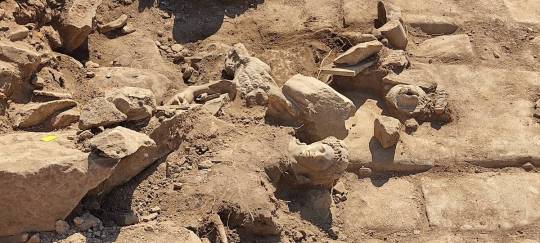
In classical Greek and Roman religion and mythology, Apollo is one of the Olympian gods. He is revered as a god of poetry, the Sun and light, healing and illness, music and dance, truth and prophecy, and archery, among other things.
Philip II, King of Macedon, founded the ancient city of Philippi in 356 BC on the site of the Thasian colony of Crenides near the Aegean Sea. The archaeological site was designated a UNESCO World Heritage Site in 2016 for its outstanding Roman architecture, urban layout as a smaller reflection of Rome itself, and significance in early Christianity.
By Oguz Buyukyildirim.
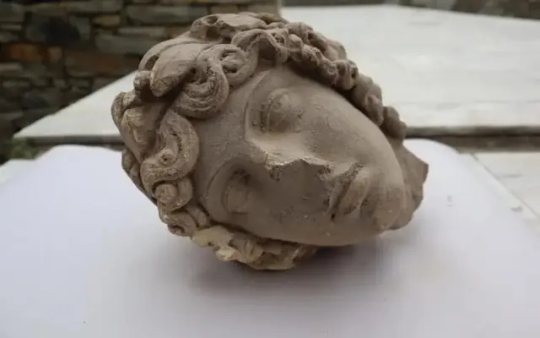
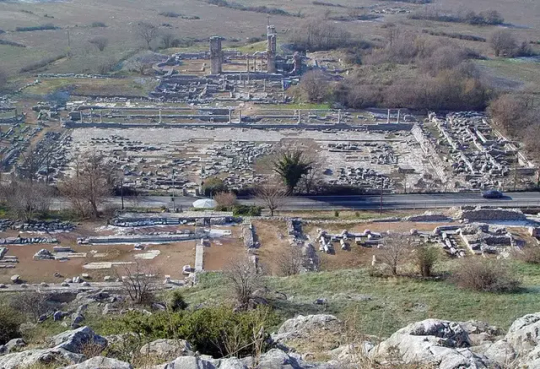
#The Marble Head of Apollo Unearthed in Greece#Philippi Kavala#marble#marble statue#ancient artifacts#archeology#archeolgst#history#history news#ancient history#ancient culture#ancient civilizations#ancient greece#greek history#greek art
213 notes
·
View notes
Text

73 notes
·
View notes
Photo

Traveling to Kavala
To the south of Drama is the old town of Kavala, located on the coast. It takes about four hours to ride there. The journey passes through the flat Drama plain, miles of tobacco fields, and the remains of the ancient city of Philippi.
The Ruins of Philippi
The only building left in Philippi is a rundown coffee house with a muddy floor. It is a place where travelers can rest their horses and have a break. The people in the coffee house, who were Turks, didn’t know much about the city’s history. There was a step made of marble with a Roman inscription, and marble blocks were scattered around. One side of the coffee house was part of a large block of marble. This marble was likely built to honor the Romans after their victory in the Battle of Philippi in 42 BC, where Augustus and Antony defeated Brutus and Cassius. The marble had holes for tying horses. When I asked the Turks what the marble pillar meant, they looked confused and said it was built in honor of a great Turkish general!
The History of Philippi
Not much is left of Philippi. The few ruins that remain tell the story of a town that lived and thrived for about 30 centuries. The first people in the area were probably Thracians who mined gold in the nearby mountains. They built a town to protect themselves from invading tribes who wanted to steal the gold. The town, called Datus or Datum, existed as early as 11 centuries before Christ. It was a prosperous town until the 4th century BC Who we are.
The fame of the gold mines was so great that the ancient Athenians tried to take control of the town. They attempted this many times, and in 360 BC, the Thasians, encouraged by an Athenian leader named Callistrates, captured Datus and renamed it Krenides. However, the Thasians only held the town for two years before the original inhabitants fought back. They forced the Thasians to seek help from Philip of Macedon, who had long wanted to take the town. Philip used this chance to capture the town, expand it, and build beautiful structures. He renamed the city Philippi after himself. The gold mines he developed made him a lot of money, with a revenue of a thousand talents.
0 notes
Photo

Traveling to Kavala
To the south of Drama is the old town of Kavala, located on the coast. It takes about four hours to ride there. The journey passes through the flat Drama plain, miles of tobacco fields, and the remains of the ancient city of Philippi.
The Ruins of Philippi
The only building left in Philippi is a rundown coffee house with a muddy floor. It is a place where travelers can rest their horses and have a break. The people in the coffee house, who were Turks, didn’t know much about the city’s history. There was a step made of marble with a Roman inscription, and marble blocks were scattered around. One side of the coffee house was part of a large block of marble. This marble was likely built to honor the Romans after their victory in the Battle of Philippi in 42 BC, where Augustus and Antony defeated Brutus and Cassius. The marble had holes for tying horses. When I asked the Turks what the marble pillar meant, they looked confused and said it was built in honor of a great Turkish general!
The History of Philippi
Not much is left of Philippi. The few ruins that remain tell the story of a town that lived and thrived for about 30 centuries. The first people in the area were probably Thracians who mined gold in the nearby mountains. They built a town to protect themselves from invading tribes who wanted to steal the gold. The town, called Datus or Datum, existed as early as 11 centuries before Christ. It was a prosperous town until the 4th century BC Who we are.
The fame of the gold mines was so great that the ancient Athenians tried to take control of the town. They attempted this many times, and in 360 BC, the Thasians, encouraged by an Athenian leader named Callistrates, captured Datus and renamed it Krenides. However, the Thasians only held the town for two years before the original inhabitants fought back. They forced the Thasians to seek help from Philip of Macedon, who had long wanted to take the town. Philip used this chance to capture the town, expand it, and build beautiful structures. He renamed the city Philippi after himself. The gold mines he developed made him a lot of money, with a revenue of a thousand talents.
0 notes
Photo

Traveling to Kavala
To the south of Drama is the old town of Kavala, located on the coast. It takes about four hours to ride there. The journey passes through the flat Drama plain, miles of tobacco fields, and the remains of the ancient city of Philippi.
The Ruins of Philippi
The only building left in Philippi is a rundown coffee house with a muddy floor. It is a place where travelers can rest their horses and have a break. The people in the coffee house, who were Turks, didn’t know much about the city’s history. There was a step made of marble with a Roman inscription, and marble blocks were scattered around. One side of the coffee house was part of a large block of marble. This marble was likely built to honor the Romans after their victory in the Battle of Philippi in 42 BC, where Augustus and Antony defeated Brutus and Cassius. The marble had holes for tying horses. When I asked the Turks what the marble pillar meant, they looked confused and said it was built in honor of a great Turkish general!
The History of Philippi
Not much is left of Philippi. The few ruins that remain tell the story of a town that lived and thrived for about 30 centuries. The first people in the area were probably Thracians who mined gold in the nearby mountains. They built a town to protect themselves from invading tribes who wanted to steal the gold. The town, called Datus or Datum, existed as early as 11 centuries before Christ. It was a prosperous town until the 4th century BC Who we are.
The fame of the gold mines was so great that the ancient Athenians tried to take control of the town. They attempted this many times, and in 360 BC, the Thasians, encouraged by an Athenian leader named Callistrates, captured Datus and renamed it Krenides. However, the Thasians only held the town for two years before the original inhabitants fought back. They forced the Thasians to seek help from Philip of Macedon, who had long wanted to take the town. Philip used this chance to capture the town, expand it, and build beautiful structures. He renamed the city Philippi after himself. The gold mines he developed made him a lot of money, with a revenue of a thousand talents.
0 notes
Photo

Traveling to Kavala
To the south of Drama is the old town of Kavala, located on the coast. It takes about four hours to ride there. The journey passes through the flat Drama plain, miles of tobacco fields, and the remains of the ancient city of Philippi.
The Ruins of Philippi
The only building left in Philippi is a rundown coffee house with a muddy floor. It is a place where travelers can rest their horses and have a break. The people in the coffee house, who were Turks, didn’t know much about the city’s history. There was a step made of marble with a Roman inscription, and marble blocks were scattered around. One side of the coffee house was part of a large block of marble. This marble was likely built to honor the Romans after their victory in the Battle of Philippi in 42 BC, where Augustus and Antony defeated Brutus and Cassius. The marble had holes for tying horses. When I asked the Turks what the marble pillar meant, they looked confused and said it was built in honor of a great Turkish general!
The History of Philippi
Not much is left of Philippi. The few ruins that remain tell the story of a town that lived and thrived for about 30 centuries. The first people in the area were probably Thracians who mined gold in the nearby mountains. They built a town to protect themselves from invading tribes who wanted to steal the gold. The town, called Datus or Datum, existed as early as 11 centuries before Christ. It was a prosperous town until the 4th century BC Who we are.
The fame of the gold mines was so great that the ancient Athenians tried to take control of the town. They attempted this many times, and in 360 BC, the Thasians, encouraged by an Athenian leader named Callistrates, captured Datus and renamed it Krenides. However, the Thasians only held the town for two years before the original inhabitants fought back. They forced the Thasians to seek help from Philip of Macedon, who had long wanted to take the town. Philip used this chance to capture the town, expand it, and build beautiful structures. He renamed the city Philippi after himself. The gold mines he developed made him a lot of money, with a revenue of a thousand talents.
0 notes
Photo
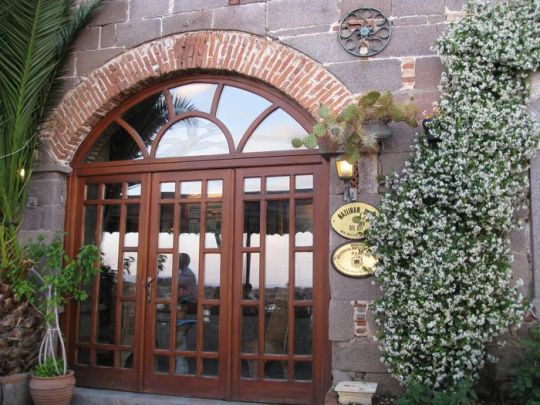
Traveling to Kavala
To the south of Drama is the old town of Kavala, located on the coast. It takes about four hours to ride there. The journey passes through the flat Drama plain, miles of tobacco fields, and the remains of the ancient city of Philippi.
The Ruins of Philippi
The only building left in Philippi is a rundown coffee house with a muddy floor. It is a place where travelers can rest their horses and have a break. The people in the coffee house, who were Turks, didn’t know much about the city’s history. There was a step made of marble with a Roman inscription, and marble blocks were scattered around. One side of the coffee house was part of a large block of marble. This marble was likely built to honor the Romans after their victory in the Battle of Philippi in 42 BC, where Augustus and Antony defeated Brutus and Cassius. The marble had holes for tying horses. When I asked the Turks what the marble pillar meant, they looked confused and said it was built in honor of a great Turkish general!
The History of Philippi
Not much is left of Philippi. The few ruins that remain tell the story of a town that lived and thrived for about 30 centuries. The first people in the area were probably Thracians who mined gold in the nearby mountains. They built a town to protect themselves from invading tribes who wanted to steal the gold. The town, called Datus or Datum, existed as early as 11 centuries before Christ. It was a prosperous town until the 4th century BC Who we are.
The fame of the gold mines was so great that the ancient Athenians tried to take control of the town. They attempted this many times, and in 360 BC, the Thasians, encouraged by an Athenian leader named Callistrates, captured Datus and renamed it Krenides. However, the Thasians only held the town for two years before the original inhabitants fought back. They forced the Thasians to seek help from Philip of Macedon, who had long wanted to take the town. Philip used this chance to capture the town, expand it, and build beautiful structures. He renamed the city Philippi after himself. The gold mines he developed made him a lot of money, with a revenue of a thousand talents.
0 notes
Photo

Traveling to Kavala
To the south of Drama is the old town of Kavala, located on the coast. It takes about four hours to ride there. The journey passes through the flat Drama plain, miles of tobacco fields, and the remains of the ancient city of Philippi.
The Ruins of Philippi
The only building left in Philippi is a rundown coffee house with a muddy floor. It is a place where travelers can rest their horses and have a break. The people in the coffee house, who were Turks, didn’t know much about the city’s history. There was a step made of marble with a Roman inscription, and marble blocks were scattered around. One side of the coffee house was part of a large block of marble. This marble was likely built to honor the Romans after their victory in the Battle of Philippi in 42 BC, where Augustus and Antony defeated Brutus and Cassius. The marble had holes for tying horses. When I asked the Turks what the marble pillar meant, they looked confused and said it was built in honor of a great Turkish general!
The History of Philippi
Not much is left of Philippi. The few ruins that remain tell the story of a town that lived and thrived for about 30 centuries. The first people in the area were probably Thracians who mined gold in the nearby mountains. They built a town to protect themselves from invading tribes who wanted to steal the gold. The town, called Datus or Datum, existed as early as 11 centuries before Christ. It was a prosperous town until the 4th century BC Who we are.
The fame of the gold mines was so great that the ancient Athenians tried to take control of the town. They attempted this many times, and in 360 BC, the Thasians, encouraged by an Athenian leader named Callistrates, captured Datus and renamed it Krenides. However, the Thasians only held the town for two years before the original inhabitants fought back. They forced the Thasians to seek help from Philip of Macedon, who had long wanted to take the town. Philip used this chance to capture the town, expand it, and build beautiful structures. He renamed the city Philippi after himself. The gold mines he developed made him a lot of money, with a revenue of a thousand talents.
0 notes
Photo

Traveling to Kavala
To the south of Drama is the old town of Kavala, located on the coast. It takes about four hours to ride there. The journey passes through the flat Drama plain, miles of tobacco fields, and the remains of the ancient city of Philippi.
The Ruins of Philippi
The only building left in Philippi is a rundown coffee house with a muddy floor. It is a place where travelers can rest their horses and have a break. The people in the coffee house, who were Turks, didn’t know much about the city’s history. There was a step made of marble with a Roman inscription, and marble blocks were scattered around. One side of the coffee house was part of a large block of marble. This marble was likely built to honor the Romans after their victory in the Battle of Philippi in 42 BC, where Augustus and Antony defeated Brutus and Cassius. The marble had holes for tying horses. When I asked the Turks what the marble pillar meant, they looked confused and said it was built in honor of a great Turkish general!
The History of Philippi
Not much is left of Philippi. The few ruins that remain tell the story of a town that lived and thrived for about 30 centuries. The first people in the area were probably Thracians who mined gold in the nearby mountains. They built a town to protect themselves from invading tribes who wanted to steal the gold. The town, called Datus or Datum, existed as early as 11 centuries before Christ. It was a prosperous town until the 4th century BC Who we are.
The fame of the gold mines was so great that the ancient Athenians tried to take control of the town. They attempted this many times, and in 360 BC, the Thasians, encouraged by an Athenian leader named Callistrates, captured Datus and renamed it Krenides. However, the Thasians only held the town for two years before the original inhabitants fought back. They forced the Thasians to seek help from Philip of Macedon, who had long wanted to take the town. Philip used this chance to capture the town, expand it, and build beautiful structures. He renamed the city Philippi after himself. The gold mines he developed made him a lot of money, with a revenue of a thousand talents.
0 notes
Photo

Traveling to Kavala
To the south of Drama is the old town of Kavala, located on the coast. It takes about four hours to ride there. The journey passes through the flat Drama plain, miles of tobacco fields, and the remains of the ancient city of Philippi.
The Ruins of Philippi
The only building left in Philippi is a rundown coffee house with a muddy floor. It is a place where travelers can rest their horses and have a break. The people in the coffee house, who were Turks, didn’t know much about the city’s history. There was a step made of marble with a Roman inscription, and marble blocks were scattered around. One side of the coffee house was part of a large block of marble. This marble was likely built to honor the Romans after their victory in the Battle of Philippi in 42 BC, where Augustus and Antony defeated Brutus and Cassius. The marble had holes for tying horses. When I asked the Turks what the marble pillar meant, they looked confused and said it was built in honor of a great Turkish general!
The History of Philippi
Not much is left of Philippi. The few ruins that remain tell the story of a town that lived and thrived for about 30 centuries. The first people in the area were probably Thracians who mined gold in the nearby mountains. They built a town to protect themselves from invading tribes who wanted to steal the gold. The town, called Datus or Datum, existed as early as 11 centuries before Christ. It was a prosperous town until the 4th century BC Who we are.
The fame of the gold mines was so great that the ancient Athenians tried to take control of the town. They attempted this many times, and in 360 BC, the Thasians, encouraged by an Athenian leader named Callistrates, captured Datus and renamed it Krenides. However, the Thasians only held the town for two years before the original inhabitants fought back. They forced the Thasians to seek help from Philip of Macedon, who had long wanted to take the town. Philip used this chance to capture the town, expand it, and build beautiful structures. He renamed the city Philippi after himself. The gold mines he developed made him a lot of money, with a revenue of a thousand talents.
0 notes
Photo

Traveling to Kavala
To the south of Drama is the old town of Kavala, located on the coast. It takes about four hours to ride there. The journey passes through the flat Drama plain, miles of tobacco fields, and the remains of the ancient city of Philippi.
The Ruins of Philippi
The only building left in Philippi is a rundown coffee house with a muddy floor. It is a place where travelers can rest their horses and have a break. The people in the coffee house, who were Turks, didn’t know much about the city’s history. There was a step made of marble with a Roman inscription, and marble blocks were scattered around. One side of the coffee house was part of a large block of marble. This marble was likely built to honor the Romans after their victory in the Battle of Philippi in 42 BC, where Augustus and Antony defeated Brutus and Cassius. The marble had holes for tying horses. When I asked the Turks what the marble pillar meant, they looked confused and said it was built in honor of a great Turkish general!
The History of Philippi
Not much is left of Philippi. The few ruins that remain tell the story of a town that lived and thrived for about 30 centuries. The first people in the area were probably Thracians who mined gold in the nearby mountains. They built a town to protect themselves from invading tribes who wanted to steal the gold. The town, called Datus or Datum, existed as early as 11 centuries before Christ. It was a prosperous town until the 4th century BC Who we are.
The fame of the gold mines was so great that the ancient Athenians tried to take control of the town. They attempted this many times, and in 360 BC, the Thasians, encouraged by an Athenian leader named Callistrates, captured Datus and renamed it Krenides. However, the Thasians only held the town for two years before the original inhabitants fought back. They forced the Thasians to seek help from Philip of Macedon, who had long wanted to take the town. Philip used this chance to capture the town, expand it, and build beautiful structures. He renamed the city Philippi after himself. The gold mines he developed made him a lot of money, with a revenue of a thousand talents.
0 notes
Text

Statue Discovered at Greece’s Ancient Site of Philippi
A large public building with a statue depicting a young male built onto its wall, workshops, residences and thermal baths are only some of the new and glorious discoveries that have been recently unearthed at the archaeological site of ancient Philippi in northern Greece.
The ancient structures were discovered by archaeologists during ongoing works to install a fire safety and water distribution network at the sprawling site. The finds will shed even more light on the secrets and the past glory of the ancient city of Philippi, established in 356 BC by the King of Macedon and father of Alexander the Great, Philip II.
Archaeologists have long believed that Philippi was adorned by magnificent buildings and that the city had gained extraordinary fame after its establishment. During the current works at the Philippi site a geophysical method capable of detecting buried walls while guiding the pipelines without disturbing any of the antiquities was employed.

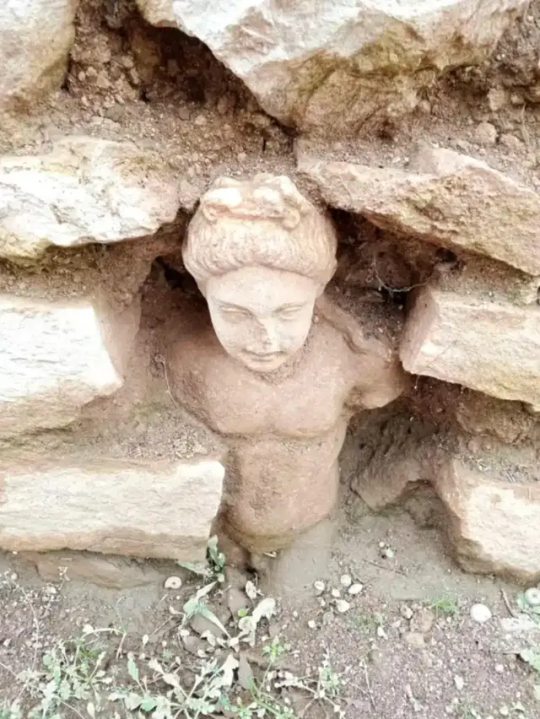

The ancient city of Philippi
Philippi was established in 356 BC by the King of Macedon, Philip II, on the site of the Thasian colony of Crenides near the head of the Aegean Sea. It developed as a “small Rome” with the establishment of the Roman Empire in the decades following the Battle of Philippi in 42 BC. Centuries later, it was abandoned after the Ottoman conquest of the 14th century. The present municipality of Filippoi is located near the ancient city’s ruins and is part of the region of East Macedonia and Thrace in Kavala, Greece.
The ancient city is currently the most vital archeological site in the region. However, the first excavations did not begin until the summer of 1914 and were soon interrupted by World War I. Between 1920 and 1937, archeologists unearthed the Greek theater, forum, baths and city walls. Following World War II, Greek archeologists returned to the site, uncovering multiple public buildings.
By Filio Kontrafouri.
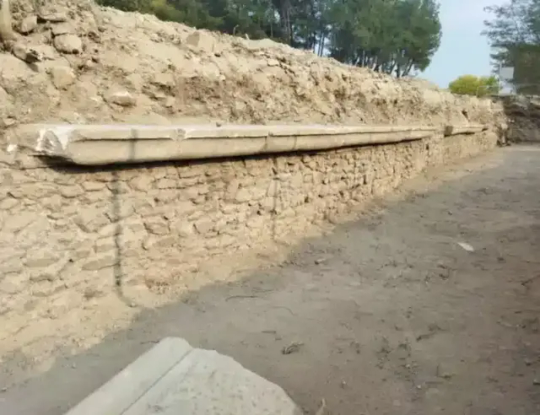
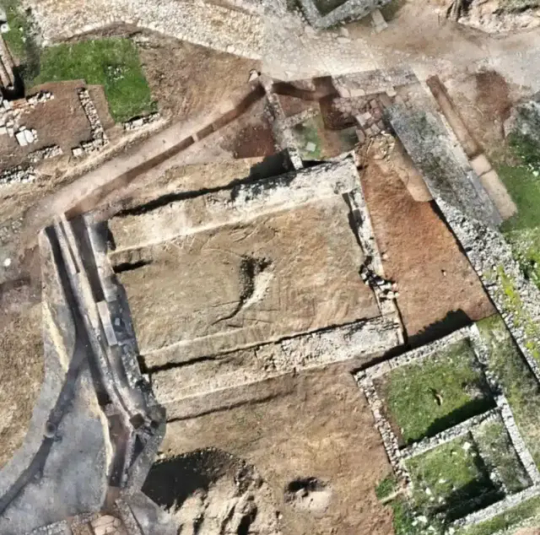
#Statue Discovered at Greece’s Ancient Site of Philippi#ancient city of Philippi#statue#ancient statues#ancient sculpture#ancient artifacts#archeology#archeolgst#history#history news#ancient history#ancient culture#ancient civilizations#ancient greece#greek history#greek art#ancient art
46 notes
·
View notes
Photo

Traveling to Kavala
To the south of Drama is the old town of Kavala, located on the coast. It takes about four hours to ride there. The journey passes through the flat Drama plain, miles of tobacco fields, and the remains of the ancient city of Philippi.
The Ruins of Philippi
The only building left in Philippi is a rundown coffee house with a muddy floor. It is a place where travelers can rest their horses and have a break. The people in the coffee house, who were Turks, didn’t know much about the city’s history. There was a step made of marble with a Roman inscription, and marble blocks were scattered around. One side of the coffee house was part of a large block of marble. This marble was likely built to honor the Romans after their victory in the Battle of Philippi in 42 BC, where Augustus and Antony defeated Brutus and Cassius. The marble had holes for tying horses. When I asked the Turks what the marble pillar meant, they looked confused and said it was built in honor of a great Turkish general!
The History of Philippi
Not much is left of Philippi. The few ruins that remain tell the story of a town that lived and thrived for about 30 centuries. The first people in the area were probably Thracians who mined gold in the nearby mountains. They built a town to protect themselves from invading tribes who wanted to steal the gold. The town, called Datus or Datum, existed as early as 11 centuries before Christ. It was a prosperous town until the 4th century BC Who we are.
The fame of the gold mines was so great that the ancient Athenians tried to take control of the town. They attempted this many times, and in 360 BC, the Thasians, encouraged by an Athenian leader named Callistrates, captured Datus and renamed it Krenides. However, the Thasians only held the town for two years before the original inhabitants fought back. They forced the Thasians to seek help from Philip of Macedon, who had long wanted to take the town. Philip used this chance to capture the town, expand it, and build beautiful structures. He renamed the city Philippi after himself. The gold mines he developed made him a lot of money, with a revenue of a thousand talents.
0 notes
Photo

Traveling to Kavala
To the south of Drama is the old town of Kavala, located on the coast. It takes about four hours to ride there. The journey passes through the flat Drama plain, miles of tobacco fields, and the remains of the ancient city of Philippi.
The Ruins of Philippi
The only building left in Philippi is a rundown coffee house with a muddy floor. It is a place where travelers can rest their horses and have a break. The people in the coffee house, who were Turks, didn’t know much about the city’s history. There was a step made of marble with a Roman inscription, and marble blocks were scattered around. One side of the coffee house was part of a large block of marble. This marble was likely built to honor the Romans after their victory in the Battle of Philippi in 42 BC, where Augustus and Antony defeated Brutus and Cassius. The marble had holes for tying horses. When I asked the Turks what the marble pillar meant, they looked confused and said it was built in honor of a great Turkish general!
The History of Philippi
Not much is left of Philippi. The few ruins that remain tell the story of a town that lived and thrived for about 30 centuries. The first people in the area were probably Thracians who mined gold in the nearby mountains. They built a town to protect themselves from invading tribes who wanted to steal the gold. The town, called Datus or Datum, existed as early as 11 centuries before Christ. It was a prosperous town until the 4th century BC Who we are.
The fame of the gold mines was so great that the ancient Athenians tried to take control of the town. They attempted this many times, and in 360 BC, the Thasians, encouraged by an Athenian leader named Callistrates, captured Datus and renamed it Krenides. However, the Thasians only held the town for two years before the original inhabitants fought back. They forced the Thasians to seek help from Philip of Macedon, who had long wanted to take the town. Philip used this chance to capture the town, expand it, and build beautiful structures. He renamed the city Philippi after himself. The gold mines he developed made him a lot of money, with a revenue of a thousand talents.
0 notes
Photo

Traveling to Kavala
To the south of Drama is the old town of Kavala, located on the coast. It takes about four hours to ride there. The journey passes through the flat Drama plain, miles of tobacco fields, and the remains of the ancient city of Philippi.
The Ruins of Philippi
The only building left in Philippi is a rundown coffee house with a muddy floor. It is a place where travelers can rest their horses and have a break. The people in the coffee house, who were Turks, didn’t know much about the city’s history. There was a step made of marble with a Roman inscription, and marble blocks were scattered around. One side of the coffee house was part of a large block of marble. This marble was likely built to honor the Romans after their victory in the Battle of Philippi in 42 BC, where Augustus and Antony defeated Brutus and Cassius. The marble had holes for tying horses. When I asked the Turks what the marble pillar meant, they looked confused and said it was built in honor of a great Turkish general!
The History of Philippi
Not much is left of Philippi. The few ruins that remain tell the story of a town that lived and thrived for about 30 centuries. The first people in the area were probably Thracians who mined gold in the nearby mountains. They built a town to protect themselves from invading tribes who wanted to steal the gold. The town, called Datus or Datum, existed as early as 11 centuries before Christ. It was a prosperous town until the 4th century BC Who we are.
The fame of the gold mines was so great that the ancient Athenians tried to take control of the town. They attempted this many times, and in 360 BC, the Thasians, encouraged by an Athenian leader named Callistrates, captured Datus and renamed it Krenides. However, the Thasians only held the town for two years before the original inhabitants fought back. They forced the Thasians to seek help from Philip of Macedon, who had long wanted to take the town. Philip used this chance to capture the town, expand it, and build beautiful structures. He renamed the city Philippi after himself. The gold mines he developed made him a lot of money, with a revenue of a thousand talents.
0 notes
Text
Car Rental Kavala

Car Rental Kavala
Convenient Car Rentals

Introduction
Hey there, wanderlusters! Ever thought about exploring Kavala, a gem in northern Greece? It’s a place where history meets stunning coastlines and vibrant culture. But wait, the adventure doesn’t stop within the city. Renting a car here is your ticket to discovering breathtaking landscapes, charming villages, and hidden gems off the beaten path. Let’s dive in and see why a rental car can be your best travel buddy in Kavala!
Why Choose a Car Rental Kavala?
Flexibility and Freedom Imagine cruising along the coastline, stopping whenever and wherever you want. A car rental gives you the freedom to explore at your own pace, without being tied to bus schedules or tour groups. Unforgettable Detours With a car, you can take those spontaneous detours that make a trip memorable: - Spontaneous detours: How about stumbling upon a quaint seaside taverna like Tavernaki tis Psaras? Imagine feasting on the freshest seafood right by the sea. - Off-the-beaten-path adventures: Hidden waterfalls like Fonografos near Krinides, secluded coves at Ammolofi Beach, and ancient ruins like the Acropolis of Filippoi await your discovery Multi-Day Explorations Why not plan a road trip through the Macedonian countryside? Picture yourself driving through picturesque villages like Panagia and stopping at historical sites such as the Monastery of Agios Ioannis Prodromos. It’s an adventure waiting to happen!
Local Car Rental Kavala Companies
Kavala has a variety of car rental options to suit different needs and budgets. Here’s where you can start: - Evros Car rental Kavala: it has 4.3 star rating on Google Maps and phone number is +30 251 022 3020. Opening hours today are 8:00 AM - 9:00 PM. - CARENTA CARENTA KAVALA CAR RENTALS: it has 5 star rating on Google Maps and phone number is +30 698 686 8518. - Europcar Greece Kavala City: it has 5 star rating on Google Maps and phone number is +30 251 022 2840. Opening hours today are 9:00 AM - 9:00 PM. - Rent Expert Kavala: it has 5 star rating on Google Maps and phone number is +30 697 251 9896. Opening hours today are 7:00 AM - 11:00 PM. - Hertz Car Rental - Kavala, Port: it has 4.1 star rating on Google Maps and phone number is +30 251 083 8310. Opening hours today are 9:00 AM - 5:00 PM.
Car Rental Kavala: Tips for a Smooth Rental Experience
Book in Advance Especially during peak season (July & August), booking your car ahead of time online can save you a lot of hassle and often money. Driver's License Requirements Make sure you have a valid driver's license from your home country. Some rental companies might also require an International Driving Permit (IDP), so check their websites for specifics. Insurance and Fuel Policy - Insurance: Look into the insurance options included with your rental and consider getting extra coverage for peace of mind. - Fuel Policy: Be clear about the fuel policy (full-to-full or pre-paid) to avoid any unexpected charges.
Hit the Road, Discover More, Car Rental Kavala
With a car rental in Kavala, the world (or at least northern Greece) is your oyster. Explore the dramatic landscapes of Mount Pangaion National Park, dive into the rich history of Philippi, or just relax on pristine beaches like Batis Beach along the Aegean coast. So, are you ready to unlock the true magic of Kavala? Rent a car and set off on an unforgettable Greek adventure! You want to go by ferry? Ferries Kavala Read the full article
0 notes